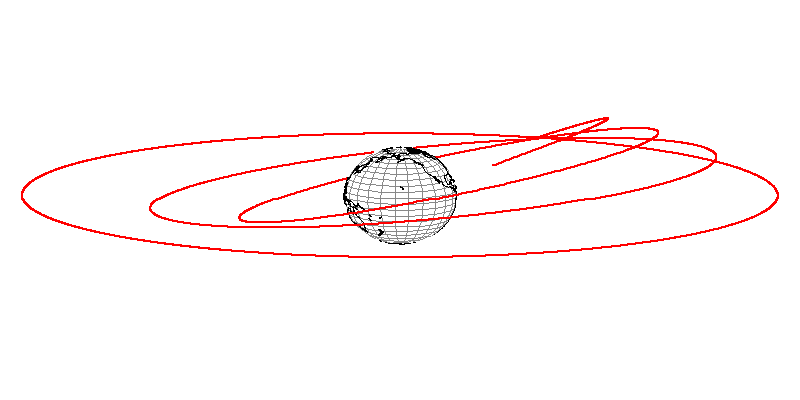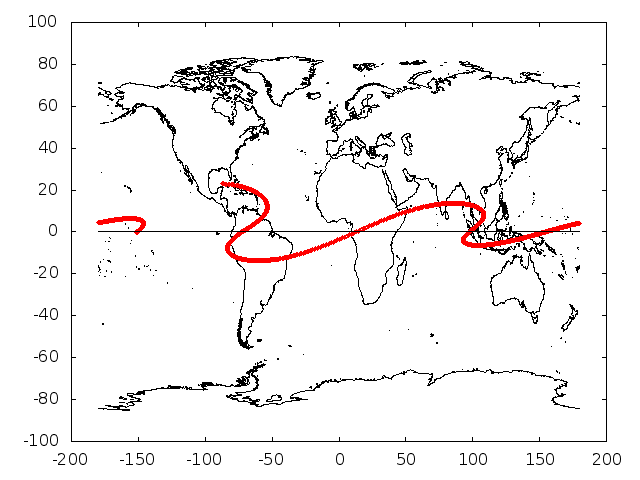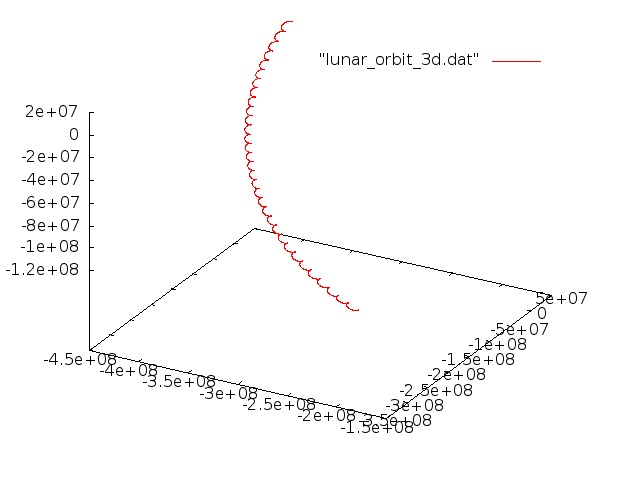Thorsten
Active member
- Joined
- Dec 7, 2013
- Messages
- 785
- Reaction score
- 56
- Points
- 43
I have now added the ability to define a rocket engine with a limited propellant quantity and a given ISP which allows some mission planning.
As a proof of concept, I've calculated a geosync insertion using three burns of a liquid propellant 1500 N apogee kick motor.
The scenario starts from a highly eccentric orbit reaching the apogee over the equator with 23 deg inclination (I assume the launcher rocket dropped me into that orbit), and over the next three burns at apogee, the orbit is gradually brought to zero inclination and circularized.
This is a 3d visualization of the orbit (as you can see, my gnuplot-fu has increased somewhat...):

Here's the rather peculiar groundtrack of the trajectory, which creeps to a standstill at the lest-most branch where it touches the equator (as seen in the 3d plot, it actually does a full circular orbit - all concentrated in the end of the groundtrack, so it really gets stationary).

From here it's basically a stationkeeping problem... and we learn how much propellant a given rocket engine needs to park a satellite there.
As a proof of concept, I've calculated a geosync insertion using three burns of a liquid propellant 1500 N apogee kick motor.
The scenario starts from a highly eccentric orbit reaching the apogee over the equator with 23 deg inclination (I assume the launcher rocket dropped me into that orbit), and over the next three burns at apogee, the orbit is gradually brought to zero inclination and circularized.
This is a 3d visualization of the orbit (as you can see, my gnuplot-fu has increased somewhat...):

Here's the rather peculiar groundtrack of the trajectory, which creeps to a standstill at the lest-most branch where it touches the equator (as seen in the 3d plot, it actually does a full circular orbit - all concentrated in the end of the groundtrack, so it really gets stationary).

From here it's basically a stationkeeping problem... and we learn how much propellant a given rocket engine needs to park a satellite there.



